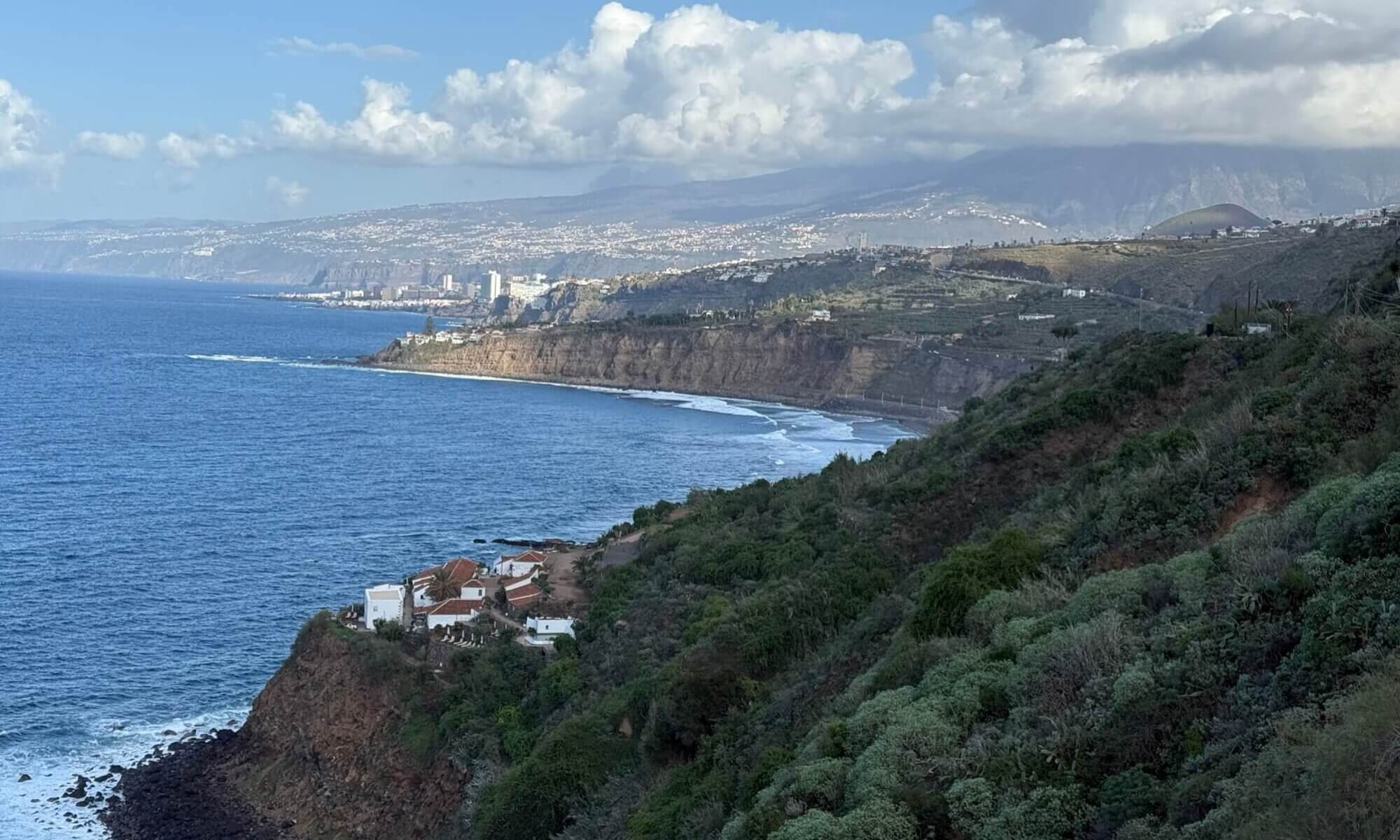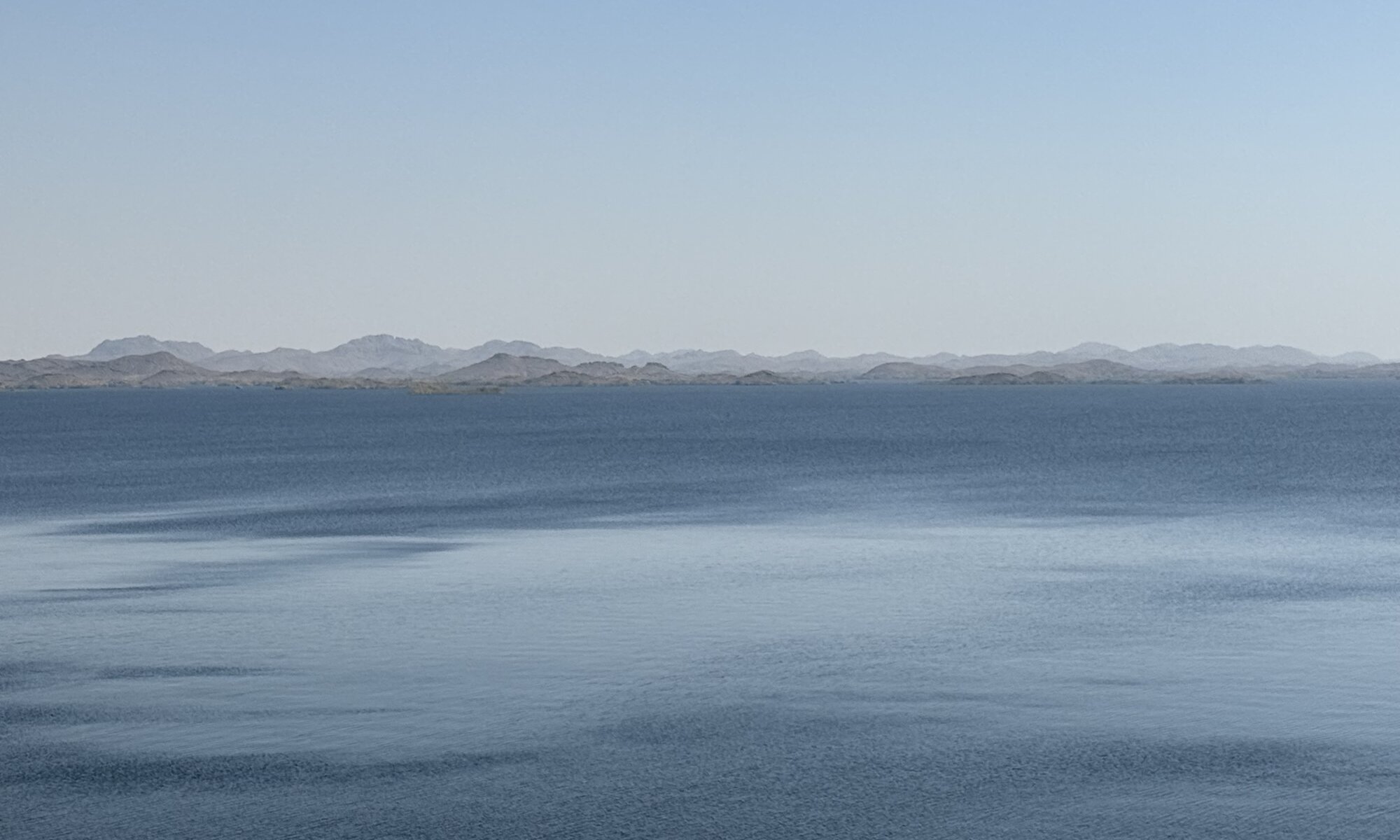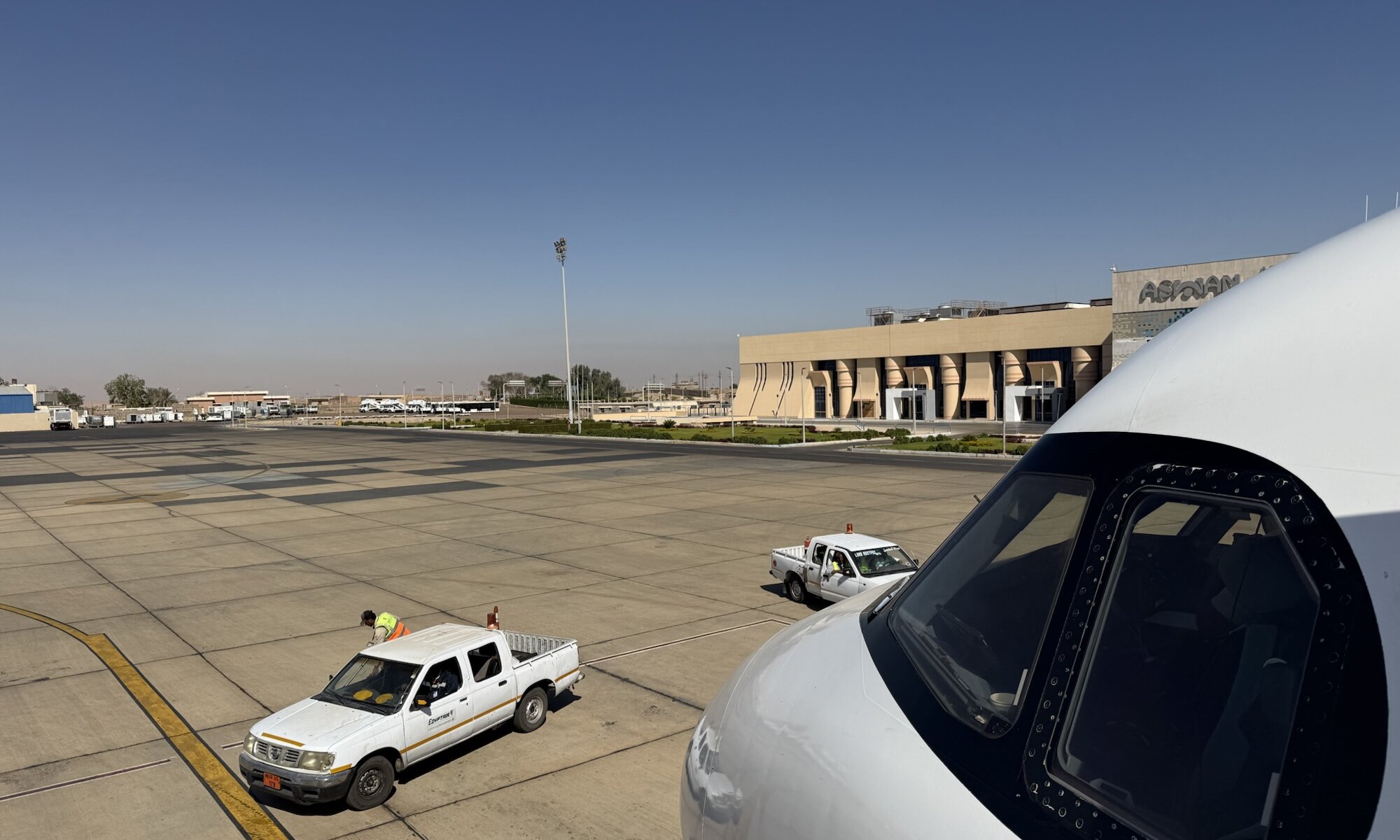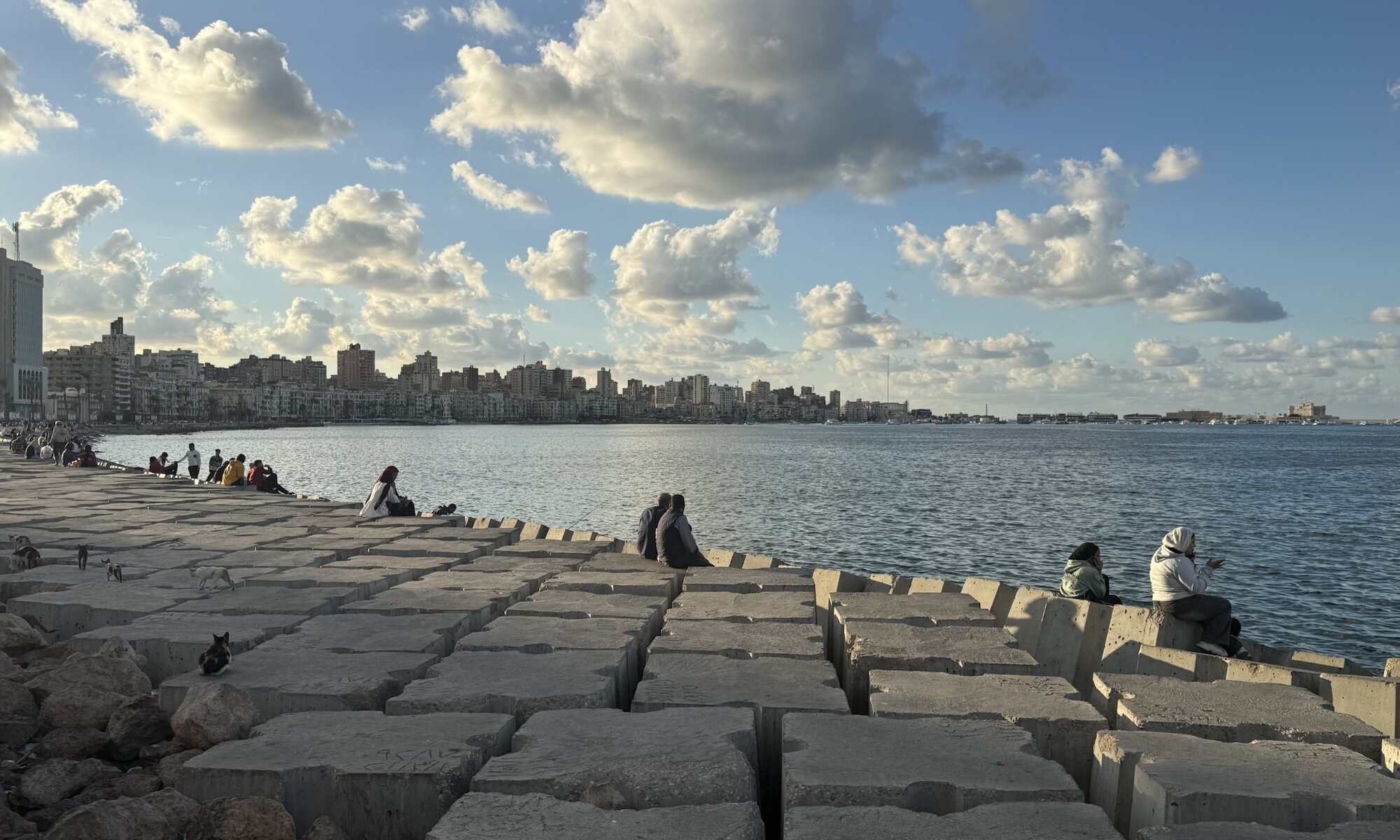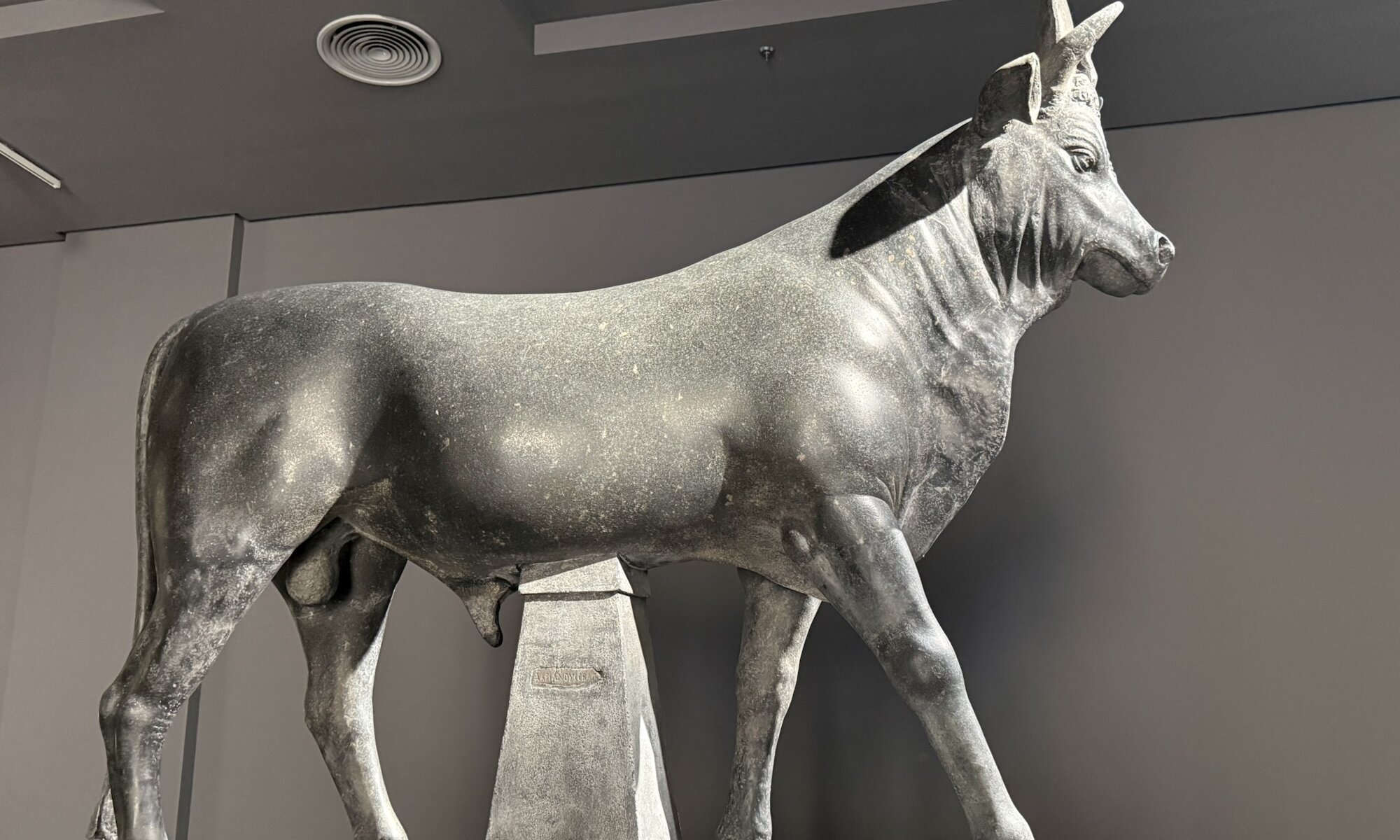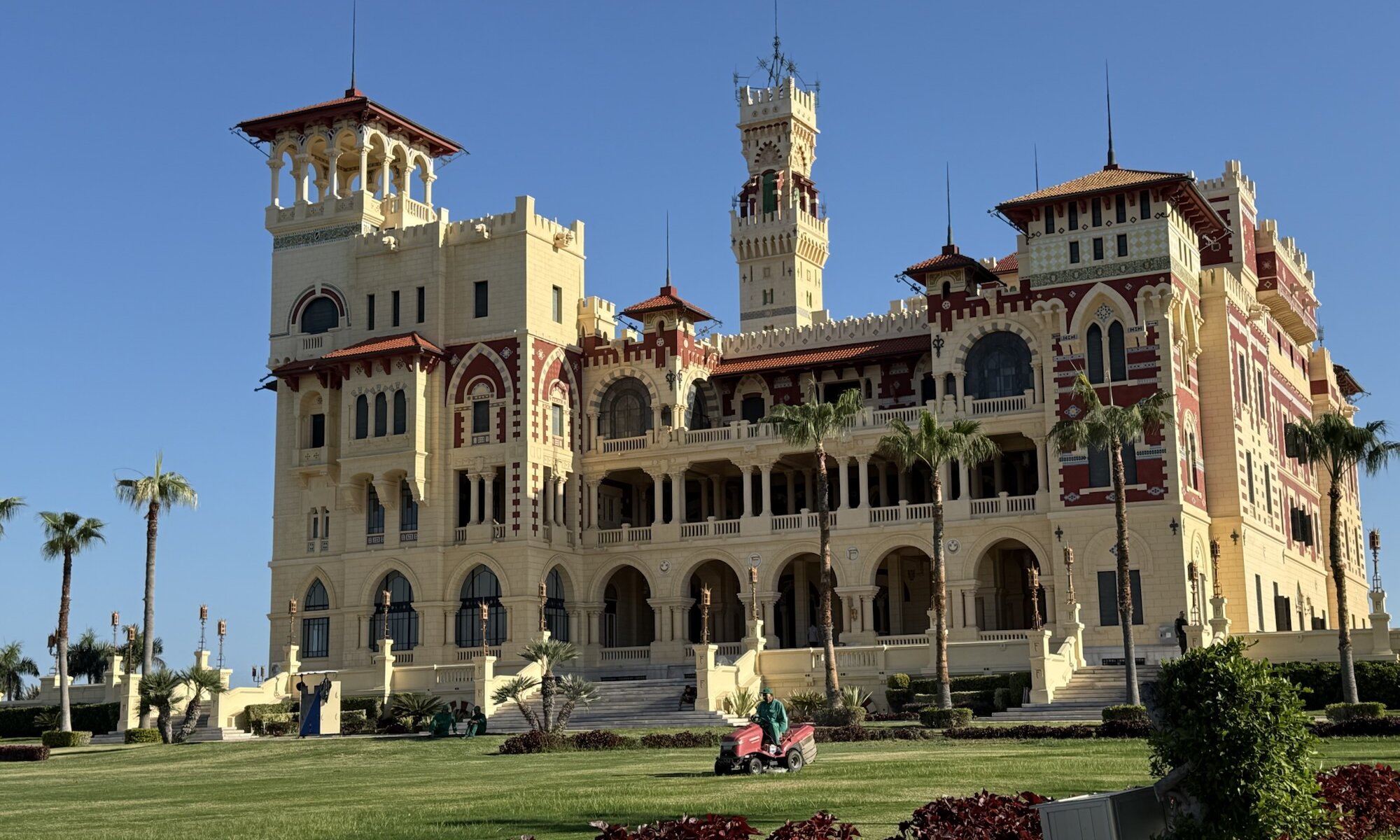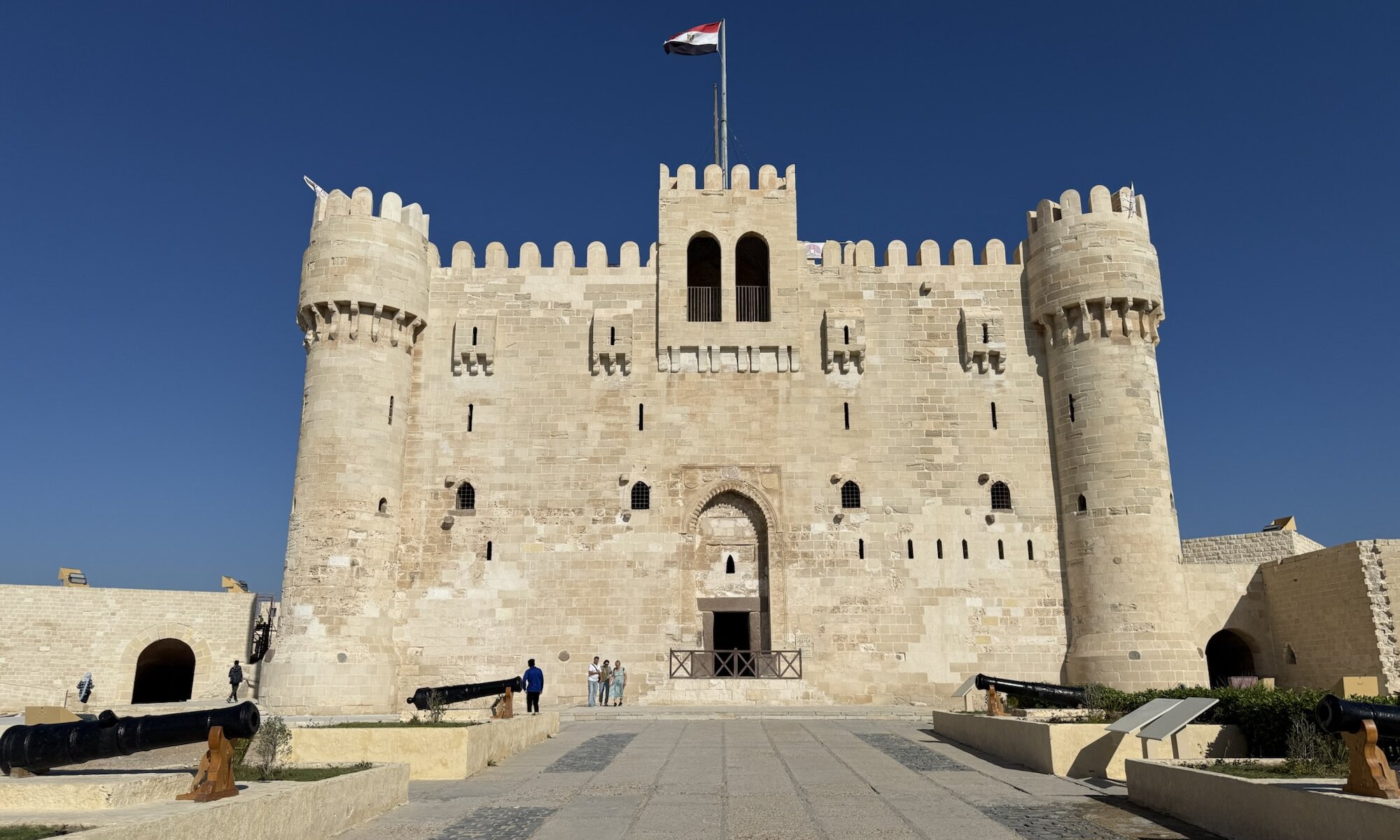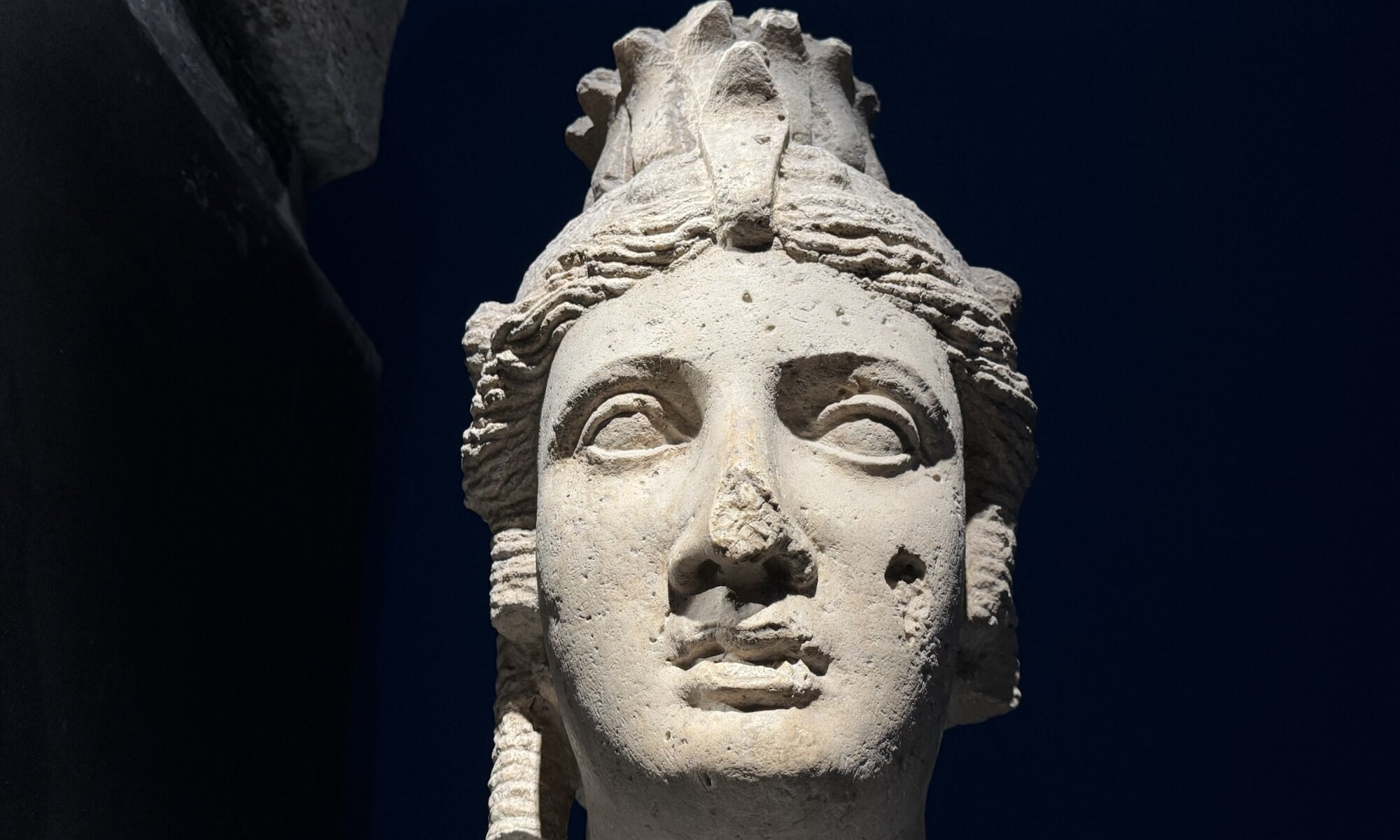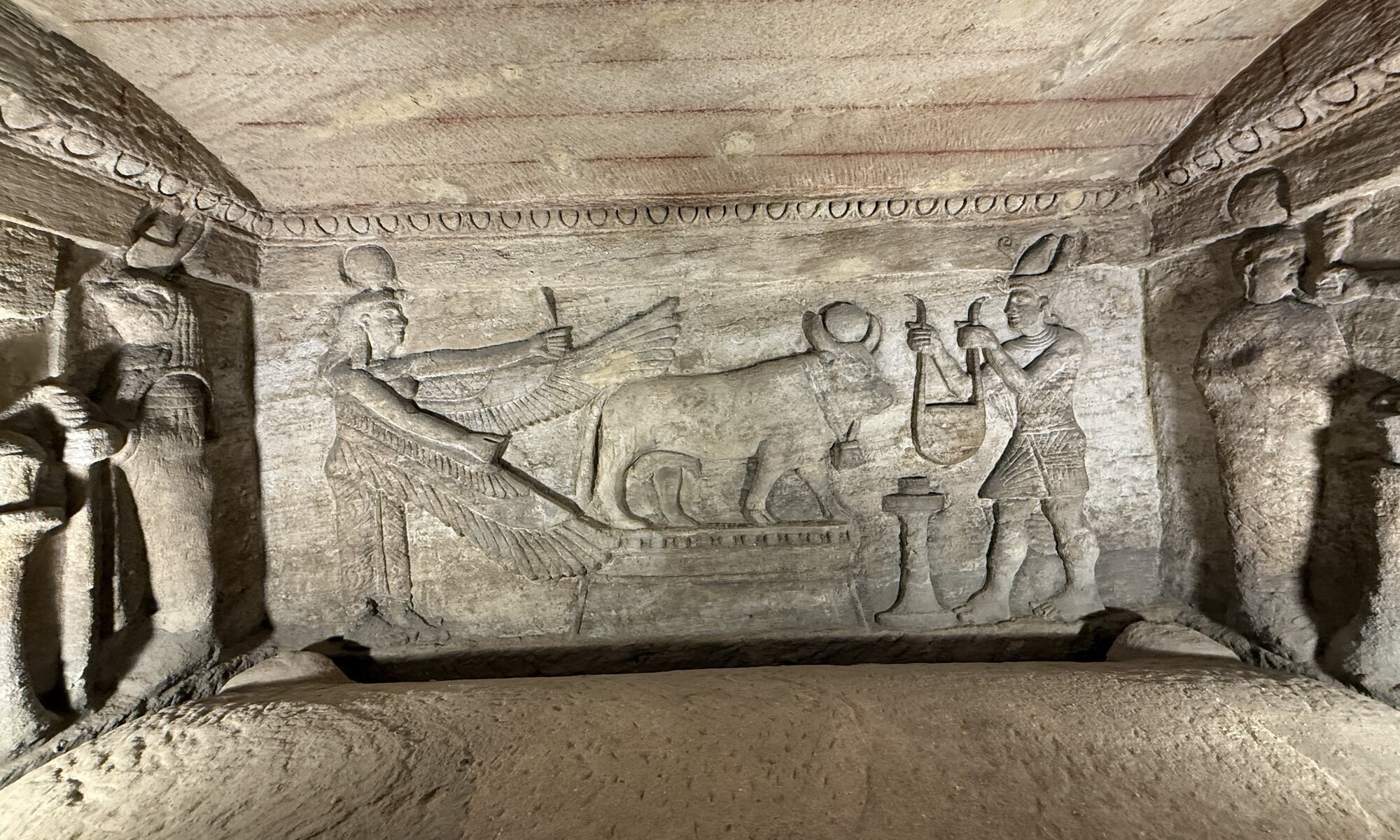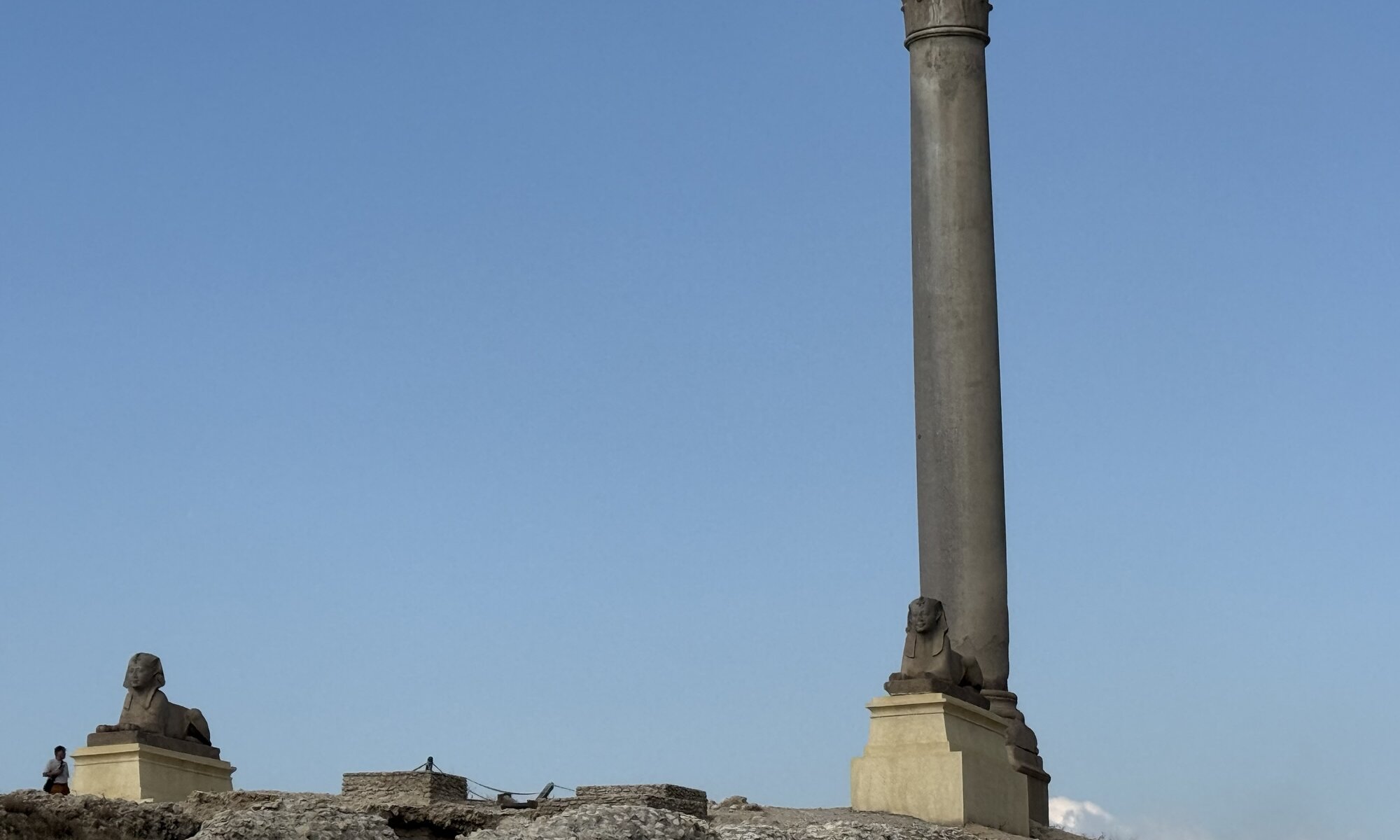Standing across the Nile river in southern Egypt, the High Dam at أسوان represents one of the most ambitious engineering undertakings of the twentieth century. Completed in 1970 after more than a decade of construction, it replaced the earlier Aswan Low Dam built by the British at the turn of the century. Conceived to control the unpredictable flooding of the Nile, the project required immense coordination between Egypt and the Soviet Union, which supplied both technical expertise and financial support. The result was a vast embankment of rock and clay standing over one hundred metres high and stretching nearly four kilometres across the river valley.
Continue reading “High Dam”Aswan International
Aswan International Airport, situated around 16 kilometres southwest of the city of أسوان in southern Egypt, serves as the principal gateway to the region’s historical and natural attractions. Originally developed in the mid-20th century to support regional travel and tourism connected to the nearby Aswan High Dam project, the airport became a crucial transport hub during Egypt’s ambitious infrastructure expansion of the 1960s. Its establishment coincided with increased interest from foreign engineers, government officials, and visitors involved in monumental development works along the Nile.
Continue reading “Aswan International”Alexandria
الإسكندرية, located on Egypt’s Mediterranean coast, is a city with a rich history that dates back to its founding in 331 BCE by Alexander the Great. Established to be both a strategic military site and a vibrant commercial hub, it quickly rose to prominence under the Ptolemaic dynasty. الإسكندرية became renowned for its cultural and intellectual achievements, most famously housing the legendary Library of Alexandria and the Pharos Lighthouse, one of the ancient world’s seven wonders. Over centuries, the city evolved into a melting pot of Greek, Egyptian, and later Roman and Islamic influences, holding a pivotal role in early Christianity and Hellenistic scholarship.
Continue reading “Alexandria”Antiquities
The Greco-Roman Museum in الإسكندرية stands as a prominent cultural landmark devoted to preserving and presenting the rich heritage of Egypt during the Greek and Roman periods. Its origins date back to the late 19th century, when the Italian scholar Giuseppe Botti began efforts in 1889 to protect الإسكندرية’s antiquities from neglect and destruction. Officially established in 1892 and initially housed in a modest rented building, the museum soon required a larger home, leading to the construction of its neoclassical building inaugurated in 1895. This elegant structure, with its grand six-column façade and historical architectural significance, reflects the cultural revival and archaeological enthusiasm that blossomed around الإسكندرية at that time.
Continue reading “Antiquities”Montazah
Montazah Palace, located in الإسكندرية, Egypt, is an impressive historical complex that originally started with the Salamlek Palace. This palace was built in 1892 by Khedive Abbas II, the last ruler of the Muhammad Ali Dynasty to hold the title of Khedive over Egypt and Sudan. Initially, it served as a hunting lodge and residence for his companion, set on a low plateau overlooking the Mediterranean Sea. Later, in 1932, King Fuad I added the larger El-Haramlek Palace and the extensive royal gardens, creating a summer residence with a unique architectural blend of Ottoman and Florentine styles, featuring two towers with one particularly decorated in Italian Renaissance design.
Continue reading “Montazah”Qaitbay
The Qaitbay Citadel, perched on the northeastern tip of الإسكندرية’s Pharos Island, is a remarkable fortification that commands the Mediterranean coast. Built between 1477 and 1479 by Sultan Al-Ashraf Sayf al-Din Qaitbay, a Circassian Mamluk ruler, the citadel was erected as a critical defensive structure against naval threats, particularly following the fall of Constantinople in 1453 when Ottoman power surged in the region. It holds a unique place in history, as it rises on the very site where the ancient Lighthouse of Alexandria once stood – a legendary wonder of the ancient world that had collapsed due to earthquakes. The citadel symbolised both military strength and the continuity of Egypt’s maritime significance through the centuries.
Continue reading “Qaitbay”Cleopatra
Cleopatra VII Philopator remains one of the most compelling figures in ancient history, a woman whose life was marked by political genius, personal charm, and immense cultural influence. Born into the Ptolemaic dynasty, she inherited a kingdom divided by internal strife and weakened by Roman interference. Unlike many of her ancestors, Cleopatra consciously embraced Egyptian traditions, learning the language and associating herself with the goddess Isis to strengthen her legitimacy. Her reign was marked by efforts to stabilise the economy, maintain Egypt’s independence, and balance between the ambitions of Roma’s competing leaders.
Continue reading “Cleopatra”Panem et circenses
The Roman Theatre, often referred to as the Roman Amphitheatre of الإسكندرية, stands as one of the city’s most intriguing archaeological sites, blending echoes of antiquity with the ever-shifting sand of Egyptian time. This semi-circular, marble-seated structure dates to the second century AD, a period when الإسكندرية thrived as an intellectual and cosmopolitan hub within the Roman Empire. While its exact function remains a subject of some academic debate, most agree that it was a venue for public entertainment – likely housing musical performances, poetry recitals, and perhaps even rhetoricians who engaged الإسكندرية’s learned crowds.
Continue reading “Panem et circenses”Kom el Shoqafa
The Catacombs of Kom el Shoqafa, located in الإسكندرية, Egypt, are a remarkable ancient burial site dating back to the 2nd century AD during the Roman period. Discovered accidentally in 1900 when a donkey fell into a shaft, this subterranean complex is carved deep into the bedrock and reflects a fascinating fusion of Egyptian, Greek, and Roman art and funerary traditions. The name ‚Kom el Shoqafa’ means ‚Mound of Shards‘, referring to the pottery fragments found at the site, which were offerings brought by mourners. The catacombs were used for burials until the end of the 4th century AD, after which they were abandoned.
Continue reading “Kom el Shoqafa”Pompay’s Pillar
Pompay’s Pillar in الإسكندرية is an impressive ancient monument that stands as one of the city’s most prominent relics from Roman times. Erected in honour of the Roman Emperor Diocletian in the early 4th century AD, it is a testament to the architectural skill and grandeur of the era. The column was commissioned to celebrate Diocletian’s successful quelling of a revolt in the city, marking a moment of restored order and Roman control. It takes its name not from the famous Roman general Pompay, but from a misinterpretation in later centuries, which has nevertheless stuck in popular usage.
Continue reading “Pompay’s Pillar”